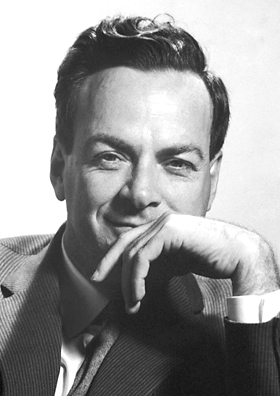
Richard Phillips Feynman (May 11, 1918 – February 15, 1988) was an American physicist known for his work in the path integral formulation of quantum mechanics, the theory of quantum electrodynamics, and the physics of the superfluidity of supercooled liquid helium, as well as in particle physics (he proposed the parton model). For his contributions to the development of quantum electrodynamics, Feynman, jointly with Julian Schwinger and Sin-Itiro Tomonaga, received theNobel Prize in Physics in 1965. He developed a widely used pictorial representation scheme for the mathematical expressions governing the behavior of subatomic particles, which later became known as Feynman diagrams. During his lifetime, Feynman became one of the best-known scientists in the world. In a 1999 poll of 130 leading physicists worldwide by the British journal Physics World he was ranked as one of the ten greatest physicists of all time. [2]
[1] in The Quotations Page
[2] in Wikipedia (12-05-2012)
 |
| In this Feynman diagram, an electron and a positronannihilate, producing a photon (represented by the blue wavy line) that becomes a quark-antiquark pair. Then one radiates a gluon (represented by the green spiral). |
A playlist from eufisica's channel:

No comments:
Post a Comment